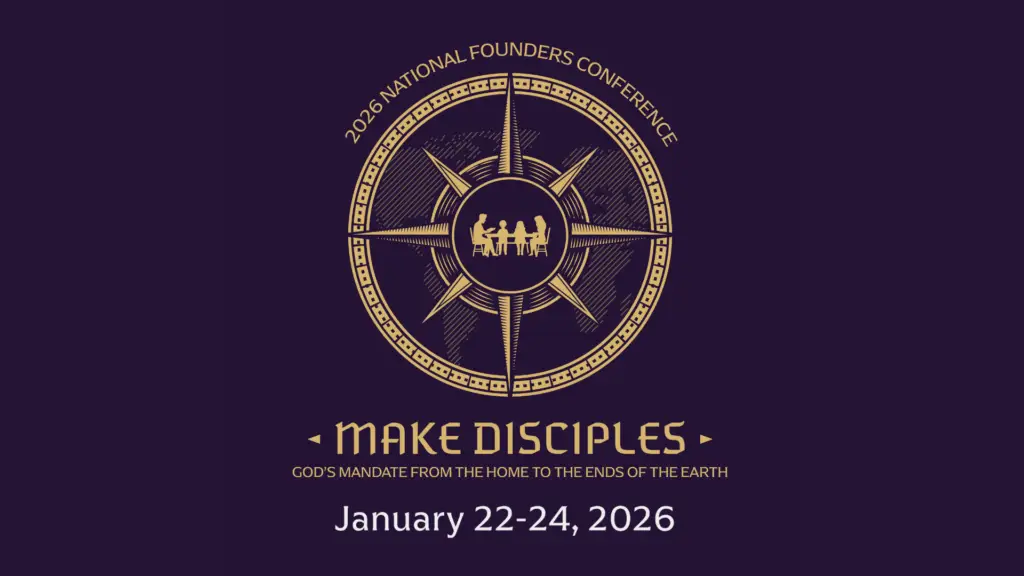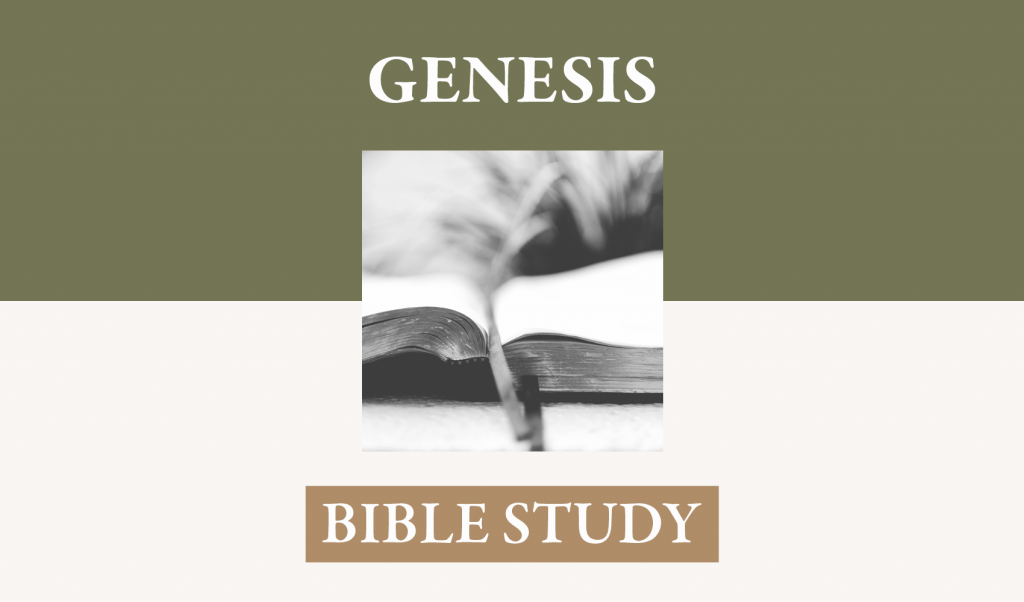Genesis 6 & 7
I. The generations from Adam to Noah show the increasingly vicious and perverse character of sin.
Though Adam would relate the events of Eden and the decline of joy, mental stability, love and delight in God that transpired, very few were brought to repentance and a commensurate desire for the dominant presence of righteousness. Only Adam and Eve had known Eden and a knowledge of God unchallenged by sin. Everyone sought their own, not the things of God. Noah was born 126 years after the death of Adam.
A. Chapters four and five introduce into the biblical record two lines of humanity, the same in their descent from Adam, but distinguished only by the purpose of God.
-
- The line of Cain is set forth as having developed in isolation from any desire for a knowledge of God (4:16–24).
- The line of Seth comes as a line that seeks the knowledge of God (4:26). It is through this line that God will save the remnant of humanity in order to bring to pass his purpose of a purely gracious redemption through Jesus Christ.
- This establishes a pattern of God’s distinguishing between peoples (calling Abraham, promise through Isaac, the selection of Jacob, the Messiah will come through Judah and specifically through the line of David) for his purpose of bringing the Messiah into the world.
B. Adam lived until Noah’s father was fifty-six years of age.
-
- During all these generations of the descendants of Seth and his other sons and daughters (5:4), Adam was available for continuing testimony to the creation, the command of God, the reason for the condition of the earth, for the brittle and destructive relations between humans, and the redemptive promise of the end of the curse through the seed of the woman.
- Lamech, Noah’s father, felt the oppressiveness of the fall to such an extent that he thought Noah might be the one to “bring us relief from our work and from the painful toil of our hands.” He knew both the terms of the fall and the promise of a redeemer. Ironically, Noah would bring about the survival of the race, through faith (Hebrews 11:7), until the coming of the one who is the “author and perfecter of faith” (Hebrews 12:2). The true Noah, the true unblemished seed of the woman will bring about the renewal of this fallen order to a kingdom that cannot be shaken (Hebrews 12:26–29).
- The flood came 1,656 years after the creation of Adam, when Noah was 600 years old and both his grandfather Methuselah and his father Lamech were dead. Lamech died five years before Methuselah and Methuselah died in the year that the flood came.
II. Genesis gives a brief but poignant description of the development of human wickedness.
A. The wickedness of humanity was pervasive and aggressive.
-
- The “Sons of God” were descendants from the line of Seth. As population centers began to merge, the Sethites found the female descendants of the line of Cain attractive and began to intermarry. This tended greatly toward the corruption of the knowledge of God to which the line of Seth had been privileged. Intermarriage between the Messianic line and the uncovenanted of the world remained a major problem throughout the Old Testament (cf. Numbers 25:6–15; Nehemiah 13:23–31). It is a mark of kindness and mercy of God that at times these uncovenanted women and their children were received into the covenant people and became examples of faith (Hebrews 11:31; Ruth 1:15–17; 4:13–22).
- The word “Nephilim” could refer to size, and may indeed explain the reason for their power, but the main intent of this passage is to show that worldly power was greatly celebrated to the exclusion of humility, godliness, doing justly, and walking humbly with God. These men were like the Chaldeans later whose “own might is their God” and whose “soul is puffed up; it is not upright within him” (Habakkuk 1:11; 2:4) and are viewed as the antithesis of those who find life through the righteousness of faith. These are the “rulers of this age” who have no understanding of sin in the context of the need for redemption (1 Corinthians 2:8).
- Now with the mingling of the sons of God and the daughters of men and the loss of distinction, God saw that “the wickedness of man was great in the earth, and that every intention of the thoughts of his heart was only evil continually” (6:5).
B. The posture of God in his holiness toward the unholiness of man
-
- As he would later destroy Sodom and Gomorrah in light of the absence of any righteous persons other than Lot, so now he determines that he will destroy the world and all its inhabitants in the absence of any righteous person but Noah.
- He would allow the world to exist in its current state for another 120 years (6:3). This would be only time enough for the instruction, gathering materials, and construction of the ark.
- “The Lord was sorry.” The intrinsic posture of God toward evil is often described in terms of deep emotion. The Scripture represents God in this way in order that we might sense something of the state of mind that God unchangeably has toward evil. When, in the face of evil, we experience sadness, horror, and anger and sense that we should always be inflexibly opposed to and greatly displeased with any manifestation of ungodliness, we have analogously entered into the mind and posture of God toward sin. His sorrow, anger, repentance, joy etc. is not fluctuating or changeable (James 1:17); nor do these expressions indicate distinct and separate manifestations of response but indicate that God’s unchangeable holiness is exhibited in perfect and fitting ways toward the created order in its many moral permutations. God’s holiness [or we could say his love of perfect beauty as seen and enjoyed in his own perfections] sometimes is experienced as wrath toward sin, approval toward righteousness, joy in the presence of the beauty of praise (Hebrews 13:15, 16).
III. The Choice of Noah
A. The statement of God’s grace to Noah probably is 120 years before the flood (6:3), when Noah was 480 years old, twenty years before he began fathering Shem, Ham, and Japheth.
-
- From the line of Seth (See 1 Chronicles 1:1–3), God chose one man to whom he would give his grace. This was given him at a time when evil was rampant.
-
-
- His belief in God and his promises had been well-established before the birth of his sons. The text (6:9) says that Noah was “a righteous man, blameless in his time; Noah walked with God.”
- His belief in God resulted in his receiving God’s verdict on the world (6:11–13) and obedience to the long task of building the ark (6:14–16). He did not complain of God’s judgment being too severe. He knew that, but for particular grace, he should suffer the same judgment.
- During this time, he also preached (2 Peter 2:5) the righteousness of God. This included, most likely, the announced righteous judgment of God on the world, a defense of God’s prerogative in removing such evil and rebellion through judgment, and the reality of God’s provision of acceptance through imputed righteousness to all that believed God.
-
-
- This time in the context of his opposition to the prevailing sense of self-confidence, moral autonomy, and vaunting of power gave proof of Noah’s faithfulness and that God had indeed granted him the grace of repentance, faith, and the indwelling of his Holy Spirit.
B. The fruit of God’s favor to Noah – “Noah was a righteous man, blameless in his generation. Noah walked with God.”
-
- From the time of Noah’s call to faith and the righteousness that comes only through faith (Hebrews 11:7; Romans 4:3–5) until God revealed to him the devastating judgment coming to the corrupt world, God, by his Spirit, put Noah on a path of progressive righteousness that transcended the iniquitous standard of the world.
- This progression toward righteousness is the common evidence of salvation for all true believers. It is not the perfect righteousness by which we are justified, but a steady advancement in knowledge of, love of, and conformity to God’s standard.
- Notice the language of Paul’s prayer for the Philippians in Philippians 1:9–11: “And it is my prayer that your love may abound more and more, with knowledge and all discernment, so that you may approve what is excellent, and so be pure and blameless for the day of Christ, filled with the fruit of righteousness that comes through Jesus Christ, to the glory and praise of God.”
- Noah’s unquestioning obedience was a manifestation before God of Noah’s faith: “I have seen that you are righteous before me in this generation” (7:1).
IV. God gave specific instructions for the ark. Both its size and its viability were included in the divine directions.
A. Its dimensions and materials
-
- The ark was made of a kind of wood that obviously was abundant before the flood, was sturdy, and also easily tooled. “Gopher” (6:14) is a transliteration of the Hebrew. Some have suggested that it was either pine, cedar, or cypress.
- It was thoroughly waterproofed, using a method of preservation that would not only coat both sides of the wood, but probably would penetrate it making it virtually impermeable to the severe testing it had to endure.
- It was 450 feet (one and one-half football fields) long, 75 feet wide, and forty-five feet high. This entire length also was composed of three decks, giving over 100,000 square feet of space. Its density, even with over 2,000,000 animals averaging the size of a sheep would not exceed the density of the water it displaced and would, therefore, float.
B. Its inhabitants
-
- Noah and his wife, their three sons and their wives were the only human beings saved from the flood. Genesis 9:19 says, “From these the people of the whole earth were dispersed.”
- Seven of every “kind” of clean animal and two of all other animals, male and female, were taken on the ark (7:2, 3). Multiplication of species from these “kinds” was built into the genetic code, so that not every identifiable species on the earth today had to be present on the ark at the time of the flood. Probably not more than 50,000 total animals were taken on the ark.
V. The Flood comes with its irresistible destructive power. The ark had been designed by God himself to withstand the torrent of natural force that would assault it.
A. The earth began to break up in great upheavals releasing massive waters stored beneath the earth’s surface (7:11, 12).
Torrential rains added to this for forty complete days. Water rose to more than 22 feet above the tops of the mountains. After five months, the ark settled on the top of Mt. Ararat. One year and ten days after the waters began to gush forth from above and below, God told Noah that he and his family could leave the ark (8:14).
B. Verses 20–24 of chapter 7 give an intense narrative of the complete devastation of all living things that depended on the “dry land” for life.
Thus, birds as well as wild pigs, vultures as well as wolves, humming birds as well as turtles were eliminated. Lightning bugs grasshoppers, and dung beetles perished but were, in the same event perpetuated into future millennia. The ark provided the only safety for all living things that depended on dry land. Humanity was cursed, and the earth and its creatures were cursed, subjected to futility and corruption (Romans 819–22).
C. The flood demonstrated the universal effects of Adam’s disobedience.
The expanse of the flood was not more severe than the extent of God’s just wrath against a fallen world. That even one family was spared, and provision was made for the animal repopulation of the earth, marks the long-term intentions of saving grace. Even so, in the coming judgment of all the sons and daughters of Adam that have ever been in life from conception until death, none will find shelter but in the righteousness of Christ. 1 Peter 3:18–22 depicts the flood, the ark, judgment, the death of Christ type and anti-type in a clear manner.
D. Peter employs the theme again in 2 Peter 3:5, 6 – “The world that then existed was deluged with water and perished:”
So devastating was this flood, that Peter uses it to contradict those who scoff at the idea of universal judgment and sees it as a type of the universal judgment of all flesh that has ever lived.
E. Isaiah 54 employs the rescue of Noah as proof of the covenantal faithfulness of God.
In all the severe disciplines of Israel, God reminds them of Noah and that the judgmental waters that covered the earth also receded: “For this is like the waters of Noah to me; for as I have sworn that the waters of Noah would no longer cover the earth, so have I sworn that I would not be angry with you nor rebuke you“ (Isaiah 54: 9). The promise already was made in Eden; the seed of the woman was neither Seth nor Noah. He was yet to come as a suffering but victorious warrior. He would remove the curse according to eternal covenantal arrangements. Noah must survive and Israel must survive: “For the mountains shall depart and the hills be removed, but my kindness shall not depart from you, nor shall My covenant of peace be removed” (Isaiah 54:10).
F. Both the narrative and the theology implied within the flood and the ark are so embedded in biblical revelation that a rejection of its historicity defies explanation.
Beyond Genesis 5–10, see Genesis 11:10 for the development of the Shemites beginning “two years after the flood; 1 Chronicles 1:3; Isaiah 54:8–10; Ezekiel 14:14, 20; Matthew 24:37–39; Luke 17:24–27; Hebrews 11:7; 1 Peter 3:20; 2 Peter 2:5; 3:5–7.
To be like God, so Satan said, by lust will be completed,
And he lied.
Of every son of Adam closing words may be repeated,
“And he died.”
The Promised One through whom the power of Satan is defeated,
Crucified.
Daughters of Cain bore children to sons of Seth of great stature,
Lines confused.
Abounding concentration of rebellion through the culture
Was infused.
The order of creation languished, every sphere of nature
Was abused.
Through the earth imagination fostered deep perversity,
All untamed.
Violence ravaged all in universal adversity;
God inflamed.
Enoch walked with God by grace through faith, safe for eternity;
Death not named.
All humanity so perverse; justice called, “Destroy the race!”
So God’s voice.
Bound in heart corruption like the rest, Noah was freed by grace,
By God’ choice.
From below and above, water drowned evil without trace.
Earth rejoice.
Above the tops of mountains all the judgment waters sounded,
Then they ceased.
The Son of God lived righteously so that where sin abounded,
Grace increased.
Anger appeased and forgiven sin in the Son were founded;
Promised peace.




















